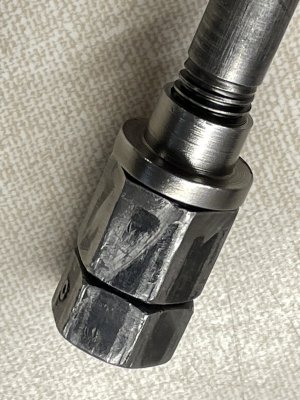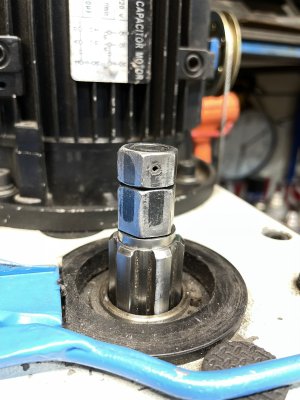Former Member
Guest
20 years on my mill and have yet to shear it. Primarily they provide resistance to rotation, but primarily are used for alignment and resistance (prevent rotation) to disengage the drawbar should the threads become "tight" in the holder. Without that it would be near impossible to grab the holder and loosen it, the 5C collets use a similar arrangement.
When I did my CNC upgrade the spindle was remove to allow checking of the of all the wear surfaces and the pin was removed to check is condition, good and no evidence of excessive rotational contact.
Think MT holders and centers not all have a key molded in and the holders do not slip.
I also discovered (very early on) that some R8 holders are short threaded by 1/2 to 3/4 of an inch and do not allow the drawbar to be fully inserted. Initial reaction was the temptation to shorten the drawbar, actual solution was to add a spacer washer which allowed me the appearance of a shortened drawbar. I got lucky on the first guess and have been using it in excess of 20 years.
I've damaged only one drawbar and it was a momentary distraction and ruching that cause operator error resulting in damage.
I have gone to using a butterfly wrench to tighten and loosen the drawbar.
I'm guessing the draw bars are grade 5 in terms of spec, which according to my references provide the following:
Advised torque 55ft lbs
Lubricated torque 41ft lbs
Clamping force 7,568lbs
(Clamping information is from the app iEngineer).
When I did my CNC upgrade the spindle was remove to allow checking of the of all the wear surfaces and the pin was removed to check is condition, good and no evidence of excessive rotational contact.
Think MT holders and centers not all have a key molded in and the holders do not slip.
I also discovered (very early on) that some R8 holders are short threaded by 1/2 to 3/4 of an inch and do not allow the drawbar to be fully inserted. Initial reaction was the temptation to shorten the drawbar, actual solution was to add a spacer washer which allowed me the appearance of a shortened drawbar. I got lucky on the first guess and have been using it in excess of 20 years.
I've damaged only one drawbar and it was a momentary distraction and ruching that cause operator error resulting in damage.
I have gone to using a butterfly wrench to tighten and loosen the drawbar.
I'm guessing the draw bars are grade 5 in terms of spec, which according to my references provide the following:
Advised torque 55ft lbs
Lubricated torque 41ft lbs
Clamping force 7,568lbs
(Clamping information is from the app iEngineer).
Last edited:


